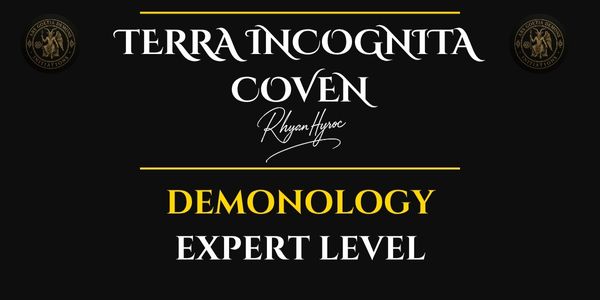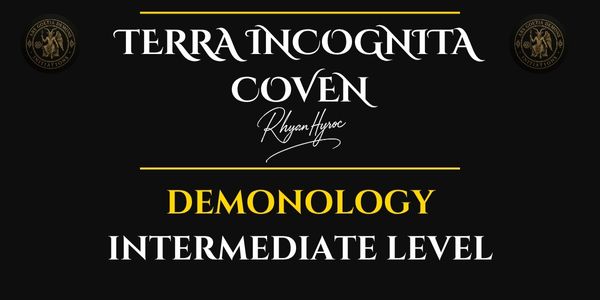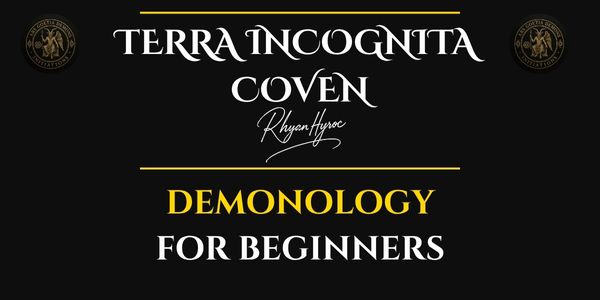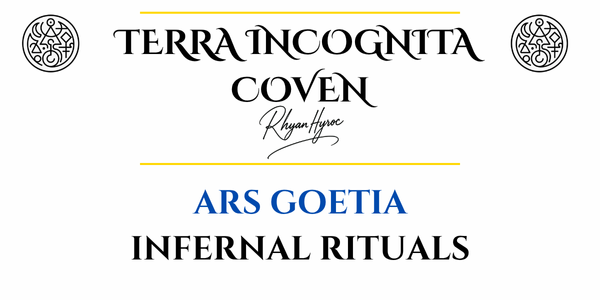Welcome to our Support Portal. Search for answers using the search box below,
or create a support ticket if you cannot find your answer.
Who is Demon Asmodeus

Asmodeus: The Crowned Fire of Lust and Judgment in the Ars Goetia
By Rhyan Hyroc, Leading Scholar of the Lemegeton and Ceremonial Demonology
- Asmodeus: The Crowned Fire of Lust and Judgment in the Ars Goetia
- Profile in the Goetia
- Original Description and Modern Translation
- Symbolism and Appearance of Asmodeus
- Historical and Cross-Cultural Roots of Asmodeus
- Domains of Influence
- Ritual Considerations
- Comparative Myth and Spiritual Kinship
- Contemporary Application
- Ethics and Warnings
- Frequently Asked Questions About Asmodeus
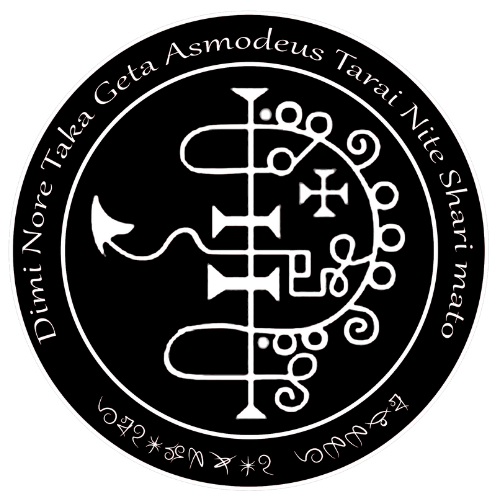
Profile in the Goetia
Asmodeus appears as the thirty-second spirit in the Ars Goetia and is among the most enigmatic and complex figures in the entire Lemegetonic corpus. Known variously as Asmoday, Ashmedai, or Chammaday in older manuscripts, he occupies the rank of King — a rare title within the hierarchy of the seventy-two spirits. He commands seventy-two legions of infernal spirits and is particularly known for his dominion over sensuality, carnal pleasure, hidden knowledge, and the architecture of temptation.
His description in the Ars Goetia is extraordinary: a creature with three heads (one of a bull, one of a man, and one of a ram), a serpent for a tail, feet of a goose, and flames issuing from his mouth. He rides upon a dragon and carries a lance with great authority. These attributes, surreal though they appear, represent layered mythic archetypes — strength, reason, defiance, fertility, and destruction — all braided into the persona of Asmodeus.
Though widely mischaracterized in Christian demonology as a simplistic embodiment of lust, the Goetia portrays Asmodeus as a far more multifaceted being: a guardian of secrets, an overseer of luxuries and pleasure, and a powerful enforcer of oaths and contracts. He is not a demon of chaos, but of structure forged through passion — an architect of power through desire.
Original Description and Modern Translation
Original Goetia Entry (Sloane MS 3825):
“The Thirty-second Spirit is Asmoday. He is a Great King, strong and powerful. He appeareth with three heads, whereof the first is like a bull, the second like a man, and the third like a ram; he hath also the tail of a serpent, and from his mouth issue flames of fire. His feet are webbed like those of a goose. He rideth upon an infernal dragon, and beareth in his hand a lance with a banner. He is the first and choicest under the power of Amaymon, and goeth before all others when the exorcist is standing. If he be overcome, he will give the ring of virtues; he teacheth the arts of arithmetic, astronomy, geometry, and all handicrafts absolutely. He giveth full and true answers to demands. He maketh one invincible. He showeth the place where treasures lie, and guardeth them. He governeth 72 legions of spirits.”
Modern Translation:
Asmodeus is the thirty-second spirit of the Goetia and holds the rank of Great King. He appears with three heads — a bull, a man, and a ram — and his mouth emits fire. He has a serpent’s tail and goose-like webbed feet, rides upon a dragon, and carries a lance with a banner. He is subject to the power of Amaymon and must be approached with caution. When compelled properly, he grants powerful knowledge in arithmetic, astronomy, geometry, and craftsmanship. He offers truthful answers, makes the magician invincible, reveals the locations of treasures, and guards them fiercely. He commands seventy-two legions of spirits.
Symbolism and Appearance of Asmodeus
The monstrous form of Asmodeus is not intended as grotesque chaos but as symbolic architecture. The bull represents strength and virility, the man reason and authority, and the ram impetuous will and fertility — a trinity of desire, judgment, and force. The serpent-tail suggests cunning, transformation, and the coiling nature of temptation. The goose feet, a frequent topic of debate among occultists, may imply connections to water, liminality, or even mockery of human pride.
His fiery breath and dragon mount connect him with solar and martial elements — he burns, confronts, and purifies. The lance he wields with a banner marks him as a sovereign warrior, a herald of conquest. Practitioners often report a heavy presence when invoking Asmodeus, described as seductive yet commanding, not unlike a high noble whose gaze permits no lie.
Historical and Cross-Cultural Roots of Asmodeus
The figure of Asmodeus predates the Ars Goetia by centuries, with roots in Persian and Jewish demonology. In the Book of Tobit, he is depicted as the demon who kills the husbands of Sarah, driven by jealous desire. The Talmud names him Ashmedai and portrays him as both fierce and learned, sometimes a king, sometimes a trickster, and sometimes a punisher of lustful excess.
The Islamic tradition absorbed elements of Ashmedai into their narratives of rebellious jinn, and in later Christian demonology, he was interpreted through the lens of vice — most commonly aligned with the deadly sin of lust. However, this reduction obscures his deeper symbolism. In early magical texts, he was invoked not merely for seduction but for insight, artistic mastery, strategic conquest, and treasure-guarding — all traits befitting a solar-martial king.
In Renaissance demonology, especially in texts like Dictionnaire Infernal, Asmodeus was associated with the secrets of the boudoir, architecture, and subterranean knowledge. His presence was invoked in courts, not simply bedrooms, making him a figure of cultured elegance as much as temptation.
Domains of Influence
Asmodeus’ powers cover a striking range of esoteric and material functions. These include:
- Sensual mastery: Control over desire, attraction, and erotic magnetism
- Secrets and mysteries: Access to forbidden knowledge and hidden rooms (literal and metaphorical)
- Artistry and craft: Mastery of geometry, architecture, and all skilled crafts
- Mathematical and stellar arts: Teaching astronomy, arithmetic, and geometric patterns of power
- Invisibility and invincibility: Energetic shielding, dominance in conflict, and masking presence
- Protection of treasures: Both physical treasures and metaphorical valuables
- Luxury and indulgence: Granting pleasures, wealth, and refined experiences
- Truthful divination: Answers without distortion, even in uncomfortable matters
- Oath-binding and loyalty: Enforcement of romantic, magical, or political contracts
- Empowerment through desire: Turning cravings into conquest, yearning into will
Asmodeus is a spirit of power reclaimed through pleasure — he transforms shame into sovereignty and reveals how desire can serve the magician, not enslave them.
Ritual Considerations
In ceremonial evocation, Asmodeus must be approached with gravity and preparedness. The Ars Goetia warns that he is particularly powerful under the authority of Amaymon, and that the magician must stand in strength to command him. This likely refers to planetary timing and the emotional posture of the summoner. He responds well to rites performed on Tuesdays (Mars) or Sundays (Solar), especially during waxing moons and in moments of confident intent.
Recommended ritual elements include red and gold candles, bloodstone or ruby talismans, and incense of storax or cinnamon. His sigil is typically inscribed on parchment, gold foil, or silk. Practitioners may notice a shift in physical temperature during his rites — warmth, static energy, or heightened sensitivity.
While he can be summoned for baneful purposes, Asmodeus prefers elevation: transforming insecurity into strength, indulgence into regal confidence, and confusion into strategic precision.
Comparative Myth and Spiritual Kinship
Asmodeus can be contrasted with several other spirits in the Goetia:
- Sitri, who excites love and reveals secrets — but with less depth and structural power
- Beleth, who arouses love through fear — whereas Asmodeus attracts through sovereignty
- Paimon, a king of knowledge — but less concerned with sensual pleasure
- Gremory, who reveals hidden things about women — whereas Asmodeus empowers through attraction
Outside the Goetia, he resonates archetypally with figures like:
- Eros, in his primal, divine form
- Solomon, builder of temples and knower of secrets
- Lucifer, especially in his fallen-angelic, radiant intellect aspect
These links confirm Asmodeus as a syncretic being — solar and martial, sensual and intellectual, regal and wild.
Contemporary Application
Modern magicians call upon Asmodeus for matters of love, power, visibility, and confidence. He is frequently evoked to:
- Rekindle sensuality in relationships
- Build personal magnetism or social dominance
- Uncover lies in romantic or political dynamics
- Construct or bless spaces such as homes, studios, or temples
- Shift toxic shame into embodied desire
- Attract clients or lovers through energetic allure
- Stabilize wealth through pleasure and enjoyment, not austerity
- Break patterns of repression, fear, or energetic impotence
Practitioners report that Asmodeus speaks in thought-impressions, emotional intensities, and dream visitations. His lessons often unfold over time, as pleasure becomes clarity and desire is alchemized into will.
Ethics and Warnings
Despite his dominion over pleasure, Asmodeus does not tolerate foolishness. His energy is commanding, and misuse of his gifts — especially in coercive love magic — can result in inversion: obsession, exposure, or collapse of false structures.
Approach him with sovereignty, not desperation. He is not a wish-granter but a forger of inner kingship. The magician must become worthy of the pleasures they request. Asmodeus does not deliver desire as escape — but as a path toward the throne.
To those bold enough to claim their truth, their body, and their throne, Asmodeus reveals the burning gates of empowered passion.
Begin your 21-Day Attunement with Asmodeus — Dominion of Desire and Fortune
This ceremonial initiation includes 7 remote rituals performed by Terra Incognita Coven masters, daily mantra work, and guided energetic integration. Through this path, Asmodeus opens the gates to clarity, charisma, and command through the sacred current of pleasure and power. https://terraincognitacoven.com/courses/dominion-of-desire-fortune-the-asmodeus-initiation/
Frequently Asked Questions About Asmodeus
1. Who is Asmodeus in the Ars Goetia?
Asmodeus is the 32nd spirit in the Ars Goetia and holds the powerful title of King. He commands 72 legions of infernal spirits and is known for governing lust, pleasure, hidden knowledge, architecture, and invincibility. He appears with three heads and rides a dragon.
2. What is Asmodeus’s primary domain of power?
Asmodeus presides over desire in all its forms — from erotic attraction and creative longing to ambition and pursuit of luxury. He transforms desire into strength, teaching the magician how to claim power through sovereign passion and refined control.
3. What does Asmodeus look like?
According to the Goetia, Asmodeus has three heads (a bull, a man, and a ram), webbed goose feet, a serpent tail, and breathes fire. He rides upon a dragon and carries a lance with a banner, embodying fiery judgment and regal desire.
4. Is Asmodeus dangerous to summon?
Asmodeus is intense, but not inherently dangerous if approached with respect, clarity, and intent aligned to truth. He demands honesty and self-possession. Those who summon him for shallow manipulation or weak desire may face internal confrontation.
5. What can Asmodeus help me achieve?
Asmodeus can enhance charisma, sensuality, strategic power, confidence, visibility, and invincibility. He reveals hidden truths, grants mastery over temptation, supports creative luxury, and teaches the structure of desire as a throne — not a trap.
6. Can Asmodeus be called for love magic?
Yes — but not for control or coercion. Asmodeus supports love rooted in sovereignty, pleasure, and mutual magnetism. He is ideal for rekindling passion, increasing allure, and attracting partners aligned with your inner power.
7. What offerings please Asmodeus?
Offerings may include red wine, gold objects, fine perfumes, cinnamon incense, or artwork created in his honor. More important than offerings is attitude: confidence, beauty, and unapologetic truth summon his presence more than any item.
8. Is Asmodeus aligned with any planet or day?
Asmodeus is often linked with Mars (for passion, conquest, and fire) and the Sun (for rulership, gold, and clarity). Tuesdays and Sundays are ideal for rituals, especially during a waxing moon or when personal power is on the rise.
9. How does Asmodeus communicate with practitioners?
Asmodeus often communicates through sudden insight, symbolic dreams, heightened desire, or emotional clarity. He may also respond during moments of silence, touch, or performance, where desire and intention are fully embodied.
10. How can I begin working with Asmodeus safely?
A structured path is recommended. The Dominion of Desire – 21-Day Attunement to Asmodeus is a ceremonial program that aligns you with his current through remote rituals and mantra work. Begin here: https://terraincognitacoven.com/courses/asmodeus-21-day-remote-initiation/
References
- Ars Goetia Demons – Asmodeus
A curated digital archive with modern profiles of all 72 Goetic spirits. The Asmodeus entry includes symbology, attributes, and ritual associations for contemporary practitioners.
https://arsgoetiademons.com/search?q=asmodeus - Sacred Texts Archive – The Lesser Key of Solomon (Lemegeton)
This open-access repository includes full texts of classic grimoires, including the Ars Goetia. A valuable source for comparing different manuscript versions of Asmodeus’s entry.
https://www.sacred-texts.com/grim/lks/index.htm - Esoteric Archives – The Lesser Key of Solomon (Peterson Edition)
Joseph H. Peterson’s scholarly edition of the Lemegeton offers critical notes, variant readings, and translation context, essential for understanding the original structure of the Goetia.
https://www.esotericarchives.com/solomon/lemegeton.htm - Dictionnaire Infernal – Asmodeus Entry (Deliriums Realm)
A historical entry on Asmodeus drawn from the 1863 edition of Dictionnaire Infernal, exploring his portrayal as a demon of luxury, sensuality, and hidden architecture.
https://www.deliriumsrealm.com/asmodeus-demon/ - Occult-World: Asmodeus
An encyclopedic overview of Asmodeus within folkloric and ritual traditions. Includes descriptive lore, personality traits, and associated symbols across multiple systems.
https://occult-world.com/asmodeus/
Demonology Expert Level: Advanced Systems, Possession Theory & Living Demonology
Unlock Sovereignty in the Infernal CosmosYou already feel it. The pull. The call. The invisible…
Demonology Intermediate Level: Mastering Infernal Pathways
Advanced Systems, Possession Theory, and Living DemonologyEnrollment Now Open – Begin Your Ascent Beyond the…
Demonology for Beginners: History, Spirits, and Practical Frameworks
A Complete Online Course for Spiritual Seekers Ready to Understand the Truth Behind DemonsStep Into…
Course for Protection, Justice & Breaking Malice
The Course for Protection, Justice & Breaking Malice at Terra Incognita Coven is a transformative…
Master the Royal Demons
Master the Royal Demons: Transform Your Spiritual Path with Ultimate Authority and Healing is a…
Master the Infernal: Course in Infernal Rituals & Ceremonial Magic
The Master the Infernal: Course in Infernal Rituals & Ceremonial Magic is the core initiatory…

